Yes, I’m back at it again. This time tackling not one movie that no one cares about, but two of them! Valerian came out two months ago and most people already forgot. It left only the taste of disappointment in the mouths of those who had any hope for it. Personally, I was also left with a question after the first critiques came out: where were all this people in 2009, with Avatar?
I’m not gonna pretend that I’m saying anything new by stating that James Cameron’s Avatar was bland. This seems to be the majority’s opinion now, and not just on this website. Avatar took the theaters by storm this year of 2009. It claimed the place of highest grossing film of all time, and then quickly disappeared into nothingness.
Valerian dropped off even quicker.
I’m not here to berate any of those movies. I’d just like to understand what made one sticks out while the other was heavily criticized? Is there a reason? And is it a different reason than “Valerian is a French movie”?
Also, spoiler alert for the entirety of both Avatar and Valerian, but do you really care?
MacGuffin and Unobtainium (really?)
On a simple surface level, the two stories don’t have a lot to do with each other. They both features a futuristic version of our universe, where humans originated from Earth. Avatar sets itself definitely closer to us than Valerian did. The universe of the Valerian and Laureline comics was infinitely bigger, showing off dozens of species, planets, time travel and more. As a result, Besson had to bring a lot more to life than Cameron did with his own story and ideas.
Comparing the city of a thousand planet and Pandora doesn’t make a lot of sense. Both make great uses of their respective CGI teams. Avatar stayed impressive after the years, but you can tell than the technology has improved between the two.
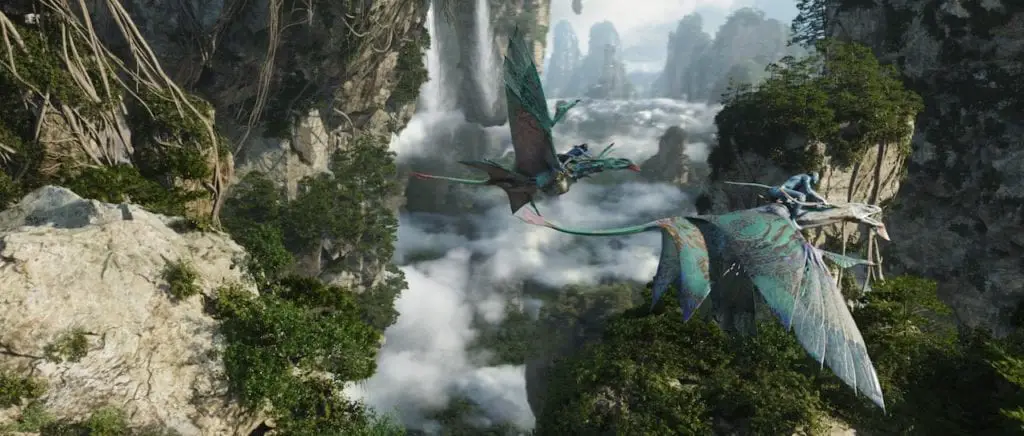
Because Avatar had only one planet (a moon, actually), Cameron and his team could focus on the environment of Pandora. It resulted in a clearer and more focused background for the story. On the other hand, Pandora isn’t all that impressive or imaginative. The moon is simply a bigger forest than we know on Earth, with slicker creatures than our mammals, because fur is extremely difficult to make in CGI.
Not to say that Valerian is really more imaginative. It contains a plethora of ideas and worlds depicted though, which will probably give you one or two things you’ll find interesting.
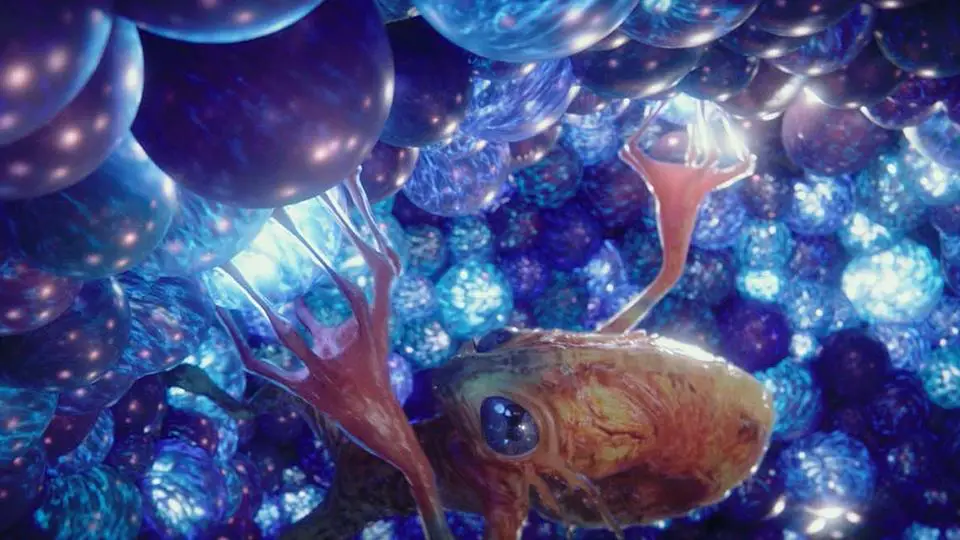
From a narrative standpoint, it’s easy to see why you can draw parallels between those two movies. Both contains a tribe of aliens, closer to nature and sitting on a source of energy that is or should be a target for pretty much anyone on the galaxy. The movies both use classic tropes to start their stories. Structurally speaking, however, those two stories don’t have a lot to do with each other.
Avatar is a story of conflict between civilization and our hero’s journey to understand, accept, and join a culture that he doesn’t get at first. The movie focus entirely on this journey of discovery. Valerian is an investigation. Our two main characters are here to resolve a mystery, which happens to relate to a civilization similar to the one we see in Avatar. This one doesn’t collide with our own and doesn’t involve our hero joining it though.
It’s interesting to note that those two very different stories used similar tropes to establish their stakes in a simple way. Tropes that every viewer could understand immediately.
Jake Sully and his merry band
I spent the last article trying to understand what was the point of Valerian and what made this character an issue in his own movie. I’m sure you could do the same analysis over Jake Sully and the rest of Avatar’s cast, but there would be a lot less to say. Not that it’s a problem.
Note that I won’t be talking about the villains for now, because I want to keep those very deep and complex characters for later.
Rewatching Avatar for this article, I was surprised by the number of characters. Characters that I forgot completely. There is his buddy Norman, who’s a “driver” of an Avatar. Dr. Grace Augustine who’s teaching Jake about the Avatar program. She gave him the cold shoulder for a while, because he is an ex-marine instead of a scientist. You have a small cast for the Na’vi, including the love interest, Neytiri, the temporary rival, Tsu’tey, and a mother and father figure for the whole village.
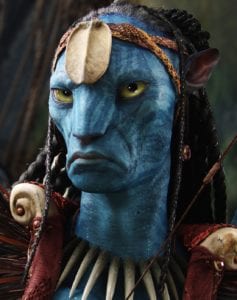
Unfortunately, there really isn’t a lot to say about any of these characters as people. While Valerian’s sin is trying and failing to give the appearance of complexity and depth to a character, Avatar doesn’t even try. Even with its protagonist. Every character of the movie is immediately identified by his function in the story.
Dr. Grace is the mentor that will teach our hero about the thing he doesn’t know about. She shares that role with Neytiri, although the fact that she is a love interest quickly become prevalent in her story. All the other characters are here to be a support for the protagonist, or a temporary struggle to overcome until the big bad guy. Jake Sully himself is just the all-out American Hero, he’s even an ex-marine. He has the simplicity that the scientist lacks to truly integrate into a new culture.
I can’t really dig deep in any of the Avatar characters. They are cliché, which isn’t inherently wrong, but they don’t really say anything interesting about the cliché they are. They are very bland, but not failed in any way.
Note that the extended edition of the movie adds some scenes to give them more background. In particular Grace gets more screen time and Sully had a new introduction. But I’m not going to touch on that since this is not what we got on screen. Trust me, it adds very little.
In a similar fashion, it’s hard to say much about Valerian’s supporting cast. Outside of a handful of character created only for a scene or two, there is only Laureline that stands out. And not even that much. Just like the cast of Avatar, she’s there to enhance the hero’s “journey”. Lacking any kind of background for her, we’re left comparing her to her companion.
Laureline is caring and fueled by passion, and she also seems to be new at this job. (Or at least not as experimented as Valerian.) After all, it seems she’s been assigned to him, and he’s her superior.

Of course, most of her role is encompassed in her job as a love-interest for Valerian, which is unfortunate because most of their conflicts quickly devolved into flirting or petty quarrels. Therefore, it’s hard to get a real sense of her character and her convictions until the very end of the movie. Where it’s brutally shoved in our face to finally give Valerian, the protagonist, a bit of evolution.
Overall, both movies fail to give their viewer any kind of compelling character. We only remember their purpose in the story. We can see that Avatar’s story-telling devices work way better than the ones in Valerian. Simply because those characters are easily identifiable and get their point across instantly. So, I guess if we had to give points, they’ll go to Cameron for this one.
Those weird native people
This is it. The big one. The one thing that made a lot of people tilt their head as they watched Valerian: “Didn’t I see this trope already?” The Na’vi and the Pearls.
Both alien races are tall, more ethereal looking than humans, kind of blue? And both are very… representative of Hollywood’s habits at portraying a good number of cultures.
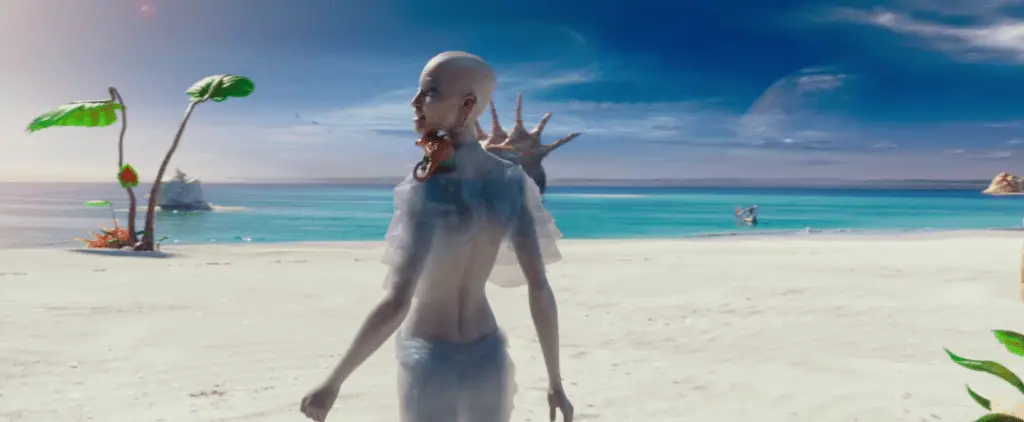
The two cultures
Now, using a meeting or a conflict between Humanity as a whole and a more “primitive” alien cultures to reflect on the way humanity evolved on our own Earth isn’t anything new. It’s a common trope in science-fiction. Especially when it presents a huge universe, with thousands of planets and cultures. It’s only logical to present us with more “advanced” civilization, and “primitive” ones. From that, you can ask the question of what really means “being advanced”.
There are usually two choices in depicting “primitive” cultures. Either barbaric monster attacking the heroes and villains without distinction, or used by the villains, to create a temporary conflict to resolve. Or, there is the Noble Savage trope. This one stems from the depiction of “primitive” Earth cultures in a lot of western movies. It revolves around the idea that those cultures who aren’t as technologically advanced also kept a closer bond with nature. They usually have some spirituality linking them to the Earth, and the Earth to everything else. It’s an easy idea to translate into science fiction context and has the advantage of being a clear environmentalist message in and on itself.
It shouldn’t be a surprise to find the same cliché in cinema. casino 5 euro deposit. However, science-fiction movie aren’t as numerous as you’d think, especially in fiction delving in those spreading universe à la Star Wars. And mainstream science-fiction movies are even fewer. People notice when two huge science-fiction movie use the same trope.
This one has some issues. Not the least of which the fact that it has been around for decades now and has become more than tired. It’s also often used as simple background for a story about a white guy. He’s the one who’s going to learn among the savages, who are usually one big mass to learn from, without real individuality, except for the love interest of the hero (of course) and a potential rival. It’s usually cultural appropriation without any kind of respect or interest in the culture depicted. The civilization that isn’t “ours” is often over-simplified for the western audiences. This is the kind of cliché you want to use with extreme care.
Now, before you jump at me, Valerian and Avatar don’t have the same use of that cliché. Avatar is straight-forward. The Na’vi are the Indigenous people and the humans are Europeans coming to conquer their land for resources and gold, without any care or attention to the inhabitants. That’s abundantly clear in the movie and you’ve seen this before.
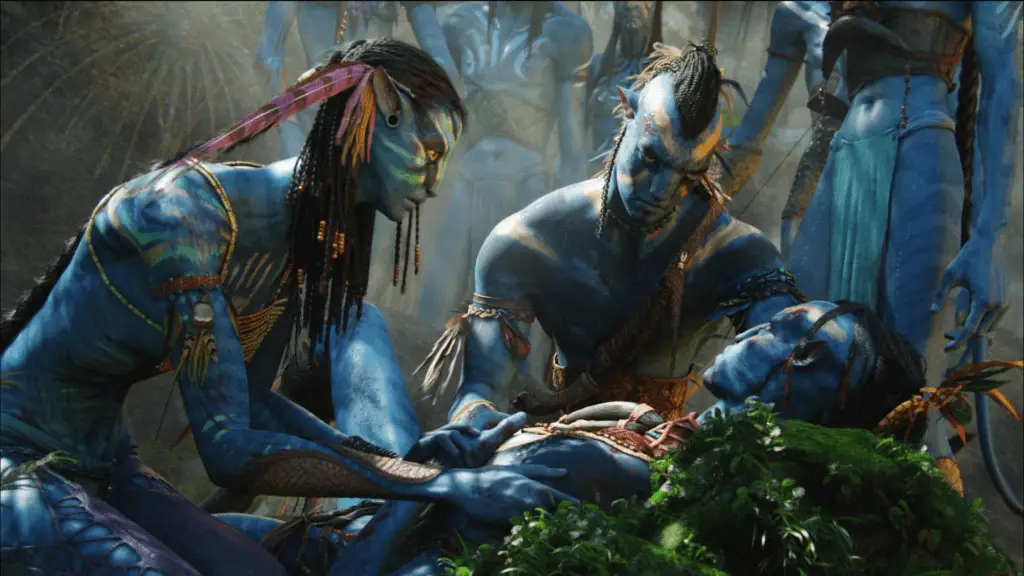
The Pearls, on the other hand, are victims of a war that wasn’t theirs, between humans and… another race we don’t know much about. They’ve become nearly extinct and need to live and survive in the depth of a space station they don’t know. A space station where the humans that gave the order who destroyed their planet live. You could make the argument that they are refugee, but the parallels aren’t as clear-cut as with the Na’vi, since the Pearls are really hidden to everyone, not willfully ignored.
Their introduction make us think about the Na’vi and the noble savage trope, but their point in the narrative is entirely different. We could say that this differences are due to the more “European” touch of this movie, but it’s hard to tell.
Narrative space
The roles of those two races in the narrative is also different. One could argue the Na’vi take a more significant portion of the screen time. The main issue with Avatar is how much they fuel the narrative. Everything the Na’vi do in the movie are in reaction to either the military aggression, or the white guy telling them what to do. At the center of the narrative is their conflict with the humans, but it’s entirely on us that lies the responsibility to make the story progress. Which could be interpreted as a way of showing humans as aggressors, while Na’vi only defend themselves.
The fact that they still needed a white guy to explain them how to do it properly doesn’t speak volumes in favor of the movie though. The extended edition also adds a few scenes showing Na’vi doing a bit more to defend themselves and talk about their previous attempt. But again, the movie in theater didn’t have those scenes.
I could see how someone would think this is the same for Valerian. After all, don’t the Pearls need Valerian to give back the MacGuffin by the end of the movie? And isn’t he the one chosen by a dead princess to carry this mission? And while this is true, it’s also forgetting who are the real instigators of the plot.
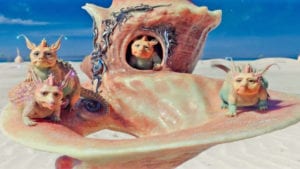
In Valerian, everything starts because the Pearls are trying to get back what’s theirs. A mission that Valerian disrupts, and that human military delays as much as possible. The entire mystery of this movie is a result of the Pearl’s activities.
A detail that makes the Pearls a lot more compelling than the Na’vi. They aren’t here to be saved by the white dude, they were trying to save themselves before that. They even had a pretty good shot at that. Valerian just happened to be there to help. More importantly, the movie revolves around their tries and errors. They are actors of their story.
Furthermore, the Pearls in this movie take interest in other cultures and technologies. They learned and grew in their trouble, but remained compassionate, not fueled by revenge but simply by their will to find a world.
I’d give the point to Besson and the Pearls in that category.
Bland Villains, and taking your audience seriously
I’ve carefully avoided to talk about the villains of those stories before. I wanted to keep a complete chapter for the deep analysis of Colonel Miles Quaritch and Commander Arün Filitt. You see, one is an evil military guy who can’t consider solving an issue with anything but brute force, while the other is… Yeah, you got the idea, those two aren’t especially complex.
Yes, it could be interesting to note how, like often in movies and especially with the military, a middle ground doesn’t exist. The movie either endorse a character entirely, turning them into a perfect good guy. Or the movie clearly shows the character being an asshole, with complete disrespect for life and nature.
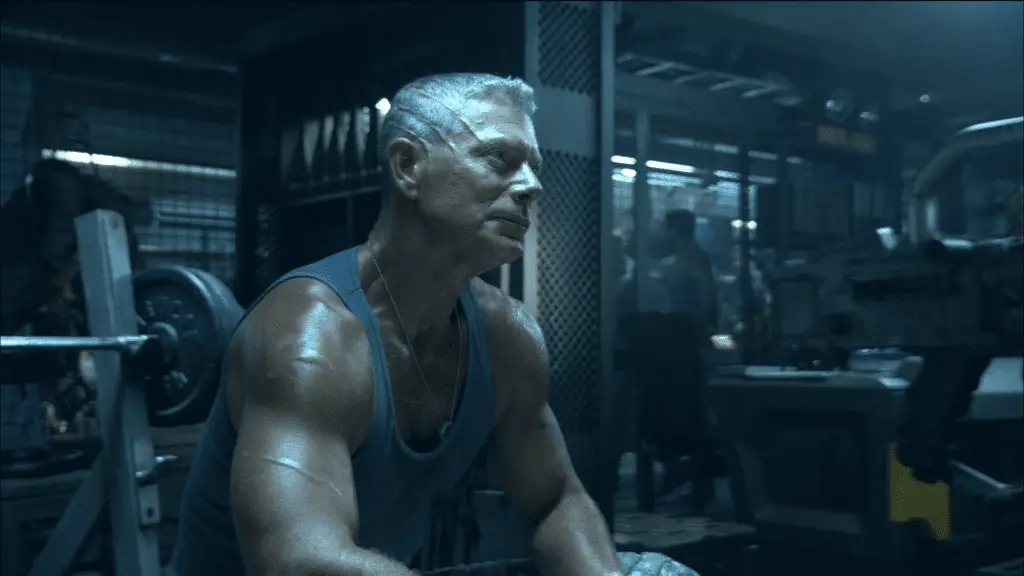
Valerian does try to justify its villain’s action by the end. But it doesn’t want a real conversation about the whole thing. No, Filitt wasn’t backed entirely against a wall, forced to use a devastating weapon to save his life and the life of every humans in the galaxy. No, he wasn’t unsure about the state of the Pearls’ planet. He knew and he didn’t care, and he choose to use a weapon that would destroy it, ignoring every warning. He’s a bad guy, and a bland one as that.
It’s a pet peeve of mine to see a movie start a conversation without any real meat behind that. It could have been interesting to have the bad guy been a screw up that had tried since its mistake to cover up, slowly degenerating into more brutal and dangerous method. A villain like this can add a lot to a movie. But Valerian didn’t try and the villain ended up being a cartoon character.
The antagonists are established early in their respective movie. Quaritch’s first scene is his welcome speech to the crew on Pandora, and it’s explicit that the guy doesn’t care about trying to understand the Na’vi—he’s here for a fight. Filitt’s second scene shows him torturing an alien to the death for intel. This isn’t exactly subtle writing.
What’s interesting about this, though, is that Avatar was more than just clear about the whole deal. Every scene with Quaritch only reinforced the idea that he was the one to fear out of all the bunch. In Valerian, on the other hand, we see a lot less of Filitt. And since the movie’s focus is an investigation, there must be a revelation. Except the reveal that he was the villain responsible for the Pearl’s world disappearance was a known-fact of everyone since his second scene. Or even his first.
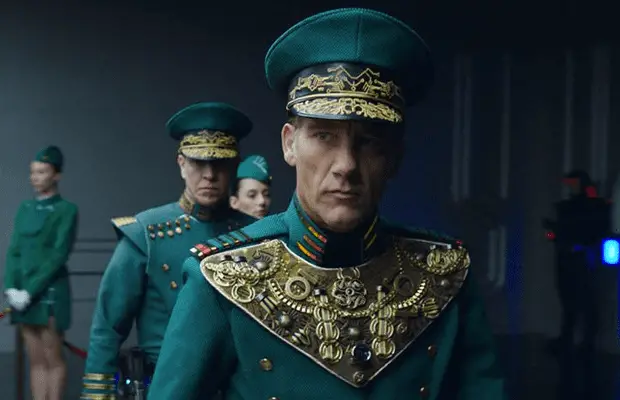
Yet the movie treats that as a revelation. We see the camera panning over the scene a first time, hiding the face of our villain. Then, minutes after, another scene with the same movement, finally ending on his face to reveal: it was Filitt the whole time! At that point, I was wondering if it was trying to pull off a twist on us by not making Filitt the true villain. It was so obvious from the start. Why would the movie try to hide it at the end if not because there was a weird final twist?
There was not, Filitt was the bad military guy, exactly like Quaritch. But this moment left an impression on me, and I’m gonna assume on many others in the movies.
Avatar, for all its flaws and blandness, doesn’t pretend it’s more complicated than it is. From the start of the movie, you know who’s the bad guy, who’s the good guy and how it’s going to go. Valerian tries to make us believe it is more than what it shows. Which leaves a far worse taste in your mouth, since at least Avatar had the decency of showing all its hand in the first 20 minutes.
Foundations to a franchise
Ultimately, Avatar’s writers and director have mastered the blandness and simplicity of their text. The movie knows its job and does it well, while Valerian, as evidenced by his protagonist, doesn’t really know where to go, resulting in a mess of ideas and potential. Both ends up choosing the simplest ideas, but one does it better.
Both those movies are the start of a franchise. Starting with 2020, we’ll get at least 4 more Avatar movies. Luc Besson planned for sequels even before the first Valerian, although the reception to the movie might change that. Considering how different the reactions were, it’ll be interesting to see how the critiques react to the follow up and if the sequels follow a similar path.
Valerian does have a larger universe already. A universe any writer can explore in more interesting ways. The story on Pandora of the first Avatar seemed complete and clearly made for one movie. It’s therefor hard to see where they are going with sequels. While I can believe that Valerian’s writing improves with time, I have a harder time imagining Avatar drifting away from its cliché beginning. Unfortunately, while I expect the reaction to the new Avatar movies to be much less enthusiastic, I’m sure their general blandness but overall competence will give them a way better appreciation than Valerian can ever hope for.
As a science-fiction fan, however, you can only hope that both those franchise will start to grow and forget tired tropes to explore deeper stories and ideas. Sci-fi universes offer a lot of possibilities and it’s really depressing to see blockbusters stick to the simplest ones.

